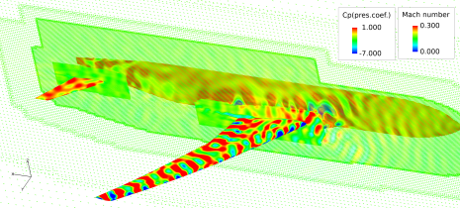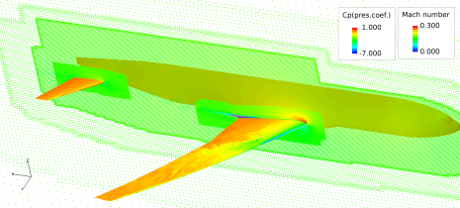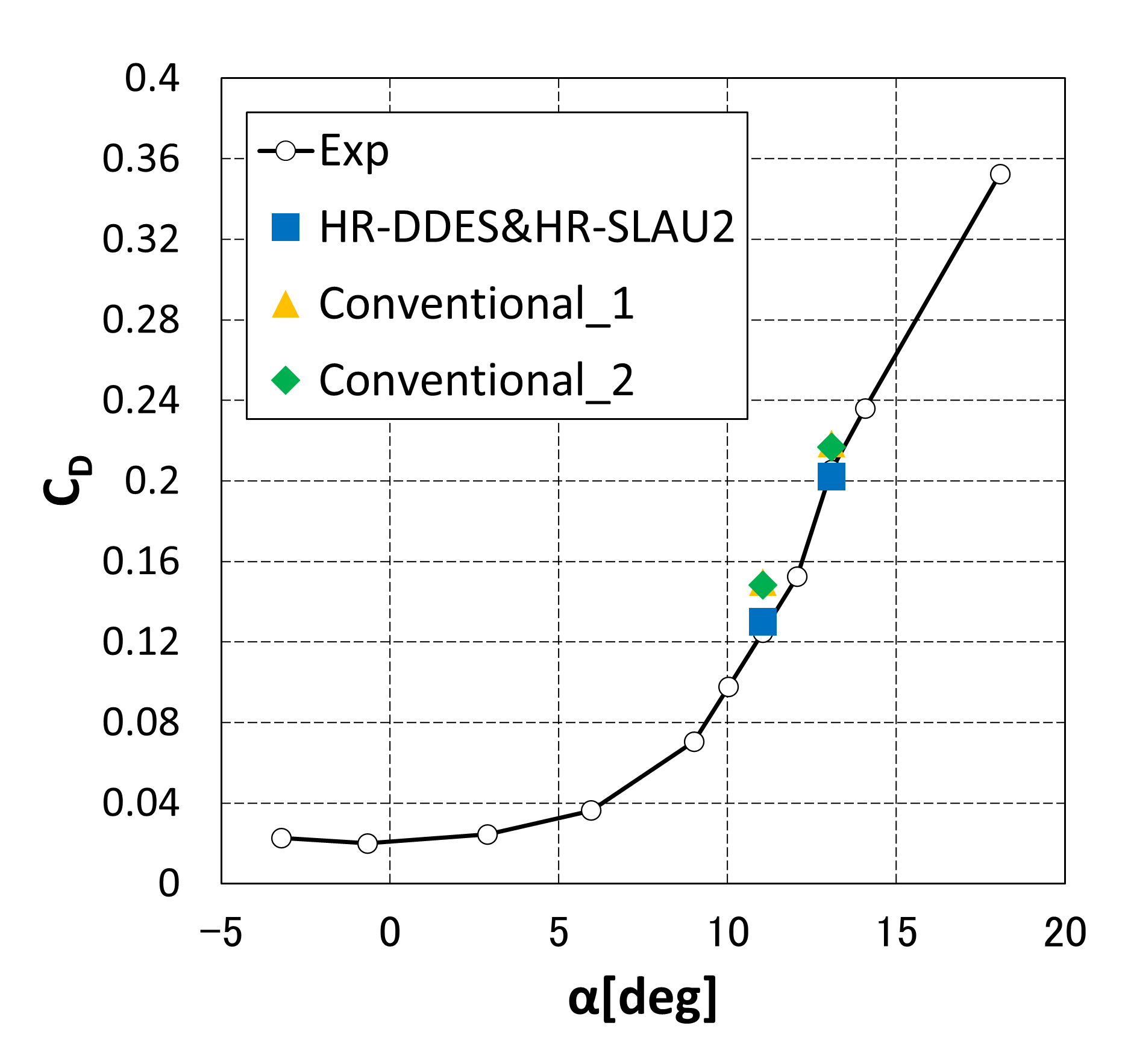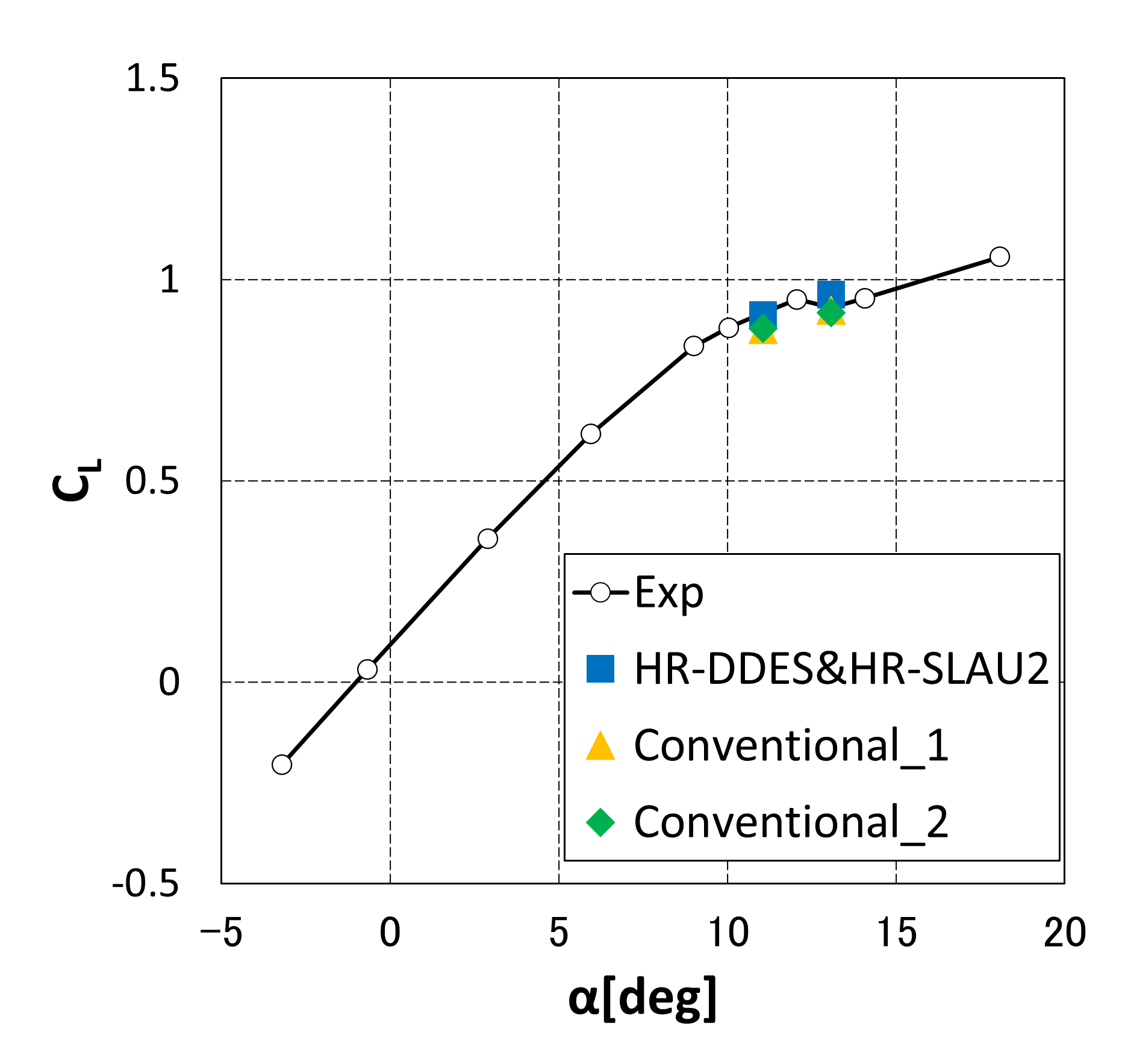High-Resolution, Efficient CFD Methods by Second Slope Limiter for Transonic Speeds
JAXA Supercomputer System Annual Report April 2020-March 2021
Report Number: R20EDA201N10
Subject Category: Aeronautical Technology
- Responsible Representative: Keiichi Kitamura, Yokohama National University, Faculty of Engineering, Division of Systems Research
- Contact Information: Keiichi Kitamura(kitamura@ynu.ac.jp)
- Members: Atsushi Hashimoto, Keiichi Kitamura, Masashi Kanamori, Hayato Kawashima, Yoshikatsu Furusawa, Takuma Yamaguchi, Fumiya Tsutsui, Yuya Yasumura, Tomohiro Mamashita, Kazuki Kakizaki, Shogo Motoki, Kiyokaze Okayama, Hirokazu Kurihara, Kaede Makino, Daichi Ishdo
Abstract
A high-resolution, Delayed DES has been conducted around whole the aircraft under the low-speed buffet condition. This numerical case is known as a tough problem, since it is difficult to obtain good numerical solutions that agree well with the corresponding experimental data. In this study, we introduced a new, unsteady-preconditioning function which controls the numerical dissipation to control grid-dependent, unsteady numerical oscillations. Its effect has been confirmed by the numerical test.
Reference URL
N/A
Reasons and benefits of using JAXA Supercomputer System
1) Expensive, unsteady CFD around whole the aircraft; 2) Many numerical cases (aerodynamic problems) in which our proposed schemes are verified.
Achievements of the Year
In the calculation case that we had done until last year, there was a problem that numerical oscillation occurred in the HR-SLAU2 with high resolution. To solve this problem, we were able to suppress the numerical oscillation by verifying the time interval and the time average interval. It was also confirmed that the calculated aerodynamic coefficients were close to the experimental values by using the optimum time increments and time average intervals. Furthermore, the effects of turbulence model and numerical flux function were investigated, and it was found that the aerodynamic coefficients obtained by combining the high-resolution HR-DDES and HR-SLAU2 were closer to the experimental values than the conventional ones.
Publications
- Oral Presentations
K. Kitamura, Y. Yasumura, M. Kanamori, A. Hashimoto : Effects of Selected Numerical Method on Unsteady NASA CRM Low-Speed Buffet Simulations, Fluid Dynamics Conference / Aerospace Numerical Simulation Symposium 2020 online, 1A11, 28 September 2020.
Usage of JSS
Computational Information
- Process Parallelization Methods: MPI
- Thread Parallelization Methods: OpenMP
- Number of Processes: 512
- Elapsed Time per Case: 50 Hour(s)
Resources Used(JSS2)
Fraction of Usage in Total Resources*1(%): 0.74
Details
Please refer to System Configuration of JSS2 for the system configuration and major specifications of JSS2.
| System Name | Amount of Core Time(core x hours) | Fraction of Usage*2(%) |
|---|---|---|
| SORA-MA | 2,650,599.28 | 0.50 |
| SORA-PP | 137,994.14 | 1.08 |
| SORA-LM | 926.36 | 0.54 |
| SORA-TPP | 0.00 | 0.00 |
| File System Name | Storage Assigned(GiB) | Fraction of Usage*2(%) |
|---|---|---|
| /home | 3,503.59 | 3.21 |
| /data | 149,276.44 | 2.88 |
| /ltmp | 38,813.73 | 3.31 |
| Archiver Name | Storage Used(TiB) | Fraction of Usage*2(%) |
|---|---|---|
| J-SPACE | 55.54 | 1.84 |
*1: Fraction of Usage in Total Resources: Weighted average of three resource types (Computing, File System, and Archiver).
*2: Fraction of Usage:Percentage of usage relative to each resource used in one year.
Resources Used(JSS3)
Fraction of Usage in Total Resources*1(%): 0.27
Details
Please refer to System Configuration of JSS3 for the system configuration and major specifications of JSS3.
| System Name | Amount of Core Time(core x hours) | Fraction of Usage*2(%) |
|---|---|---|
| TOKI-SORA | 690,950.83 | 0.15 |
| TOKI-RURI | 56,967.09 | 0.33 |
| TOKI-TRURI | 0.00 | 0.00 |
| File System Name | Storage Assigned(GiB) | Fraction of Usage*2(%) |
|---|---|---|
| /home | 2,393.76 | 1.64 |
| /data | 129,386.72 | 2.17 |
| /ssd | 5,969.85 | 3.12 |
| Archiver Name | Storage Used(TiB) | Fraction of Usage*2(%) |
|---|---|---|
| J-SPACE | 55.54 | 1.84 |
*1: Fraction of Usage in Total Resources: Weighted average of three resource types (Computing, File System, and Archiver).
*2: Fraction of Usage:Percentage of usage relative to each resource used in one year.
JAXA Supercomputer System Annual Report April 2020-March 2021






